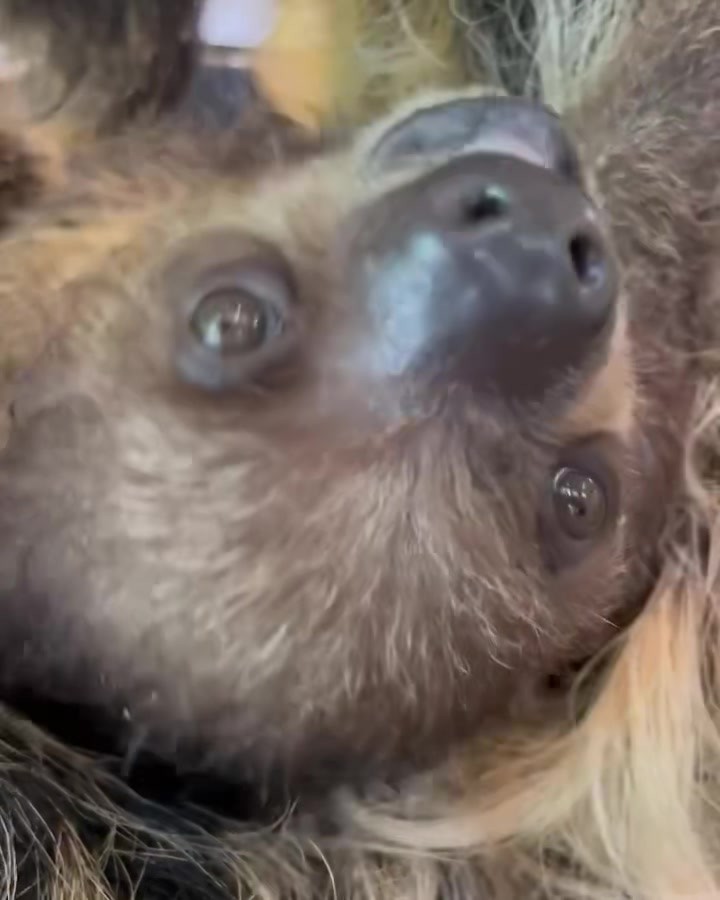Summary:
1. The remarkable journey of baby sloths hanging upside down.
2. Juno, the adventurous and curious three-month-old sloth.
3. The unique characteristics and adaptations of sloths.
4. Interesting facts about sloths that will surprise you.
5. The important role sloths play in their ecosystem.
Have you ever taken a moment to marvel at the fascinating world of baby sloths? If not, let me introduce you to Juno, a three-month-old sloth already defying gravity and exploring the world upside down! Sloths are truly remarkable creatures, and the journey of a baby sloth as it learns to hang upside down is nothing short of awe-inspiring. So, grab a cup of coffee, sit back, and dive into the enchanting world of Juno, the baby sloth.
From the moment they are born, baby sloths have an innate ability to hang upside down. It’s truly astonishing that at just 20 to 25 days old, these little sloths begin to find their footing in the upside-down world. They rely on their strong claws and an incredible grip to hold on to trees, defying gravity with remarkable ease. Being three months old, Juno is already a master at this art.
One of the most remarkable aspects of baby sloths, including Juno, is their sense of exploration. Despite their seemingly slow pace, they possess a curious nature that leads them to venture out and experience the world from incredible angles. With her playful spirit, Juno has already started exploring the art of hanging upside down. It’s heartwarming to witness her adventurous spirit as she fearlessly walks through the treetops.
Sloths, as a species, possess unique characteristics and adaptations that make them perfectly suited for their arboreal lifestyle. Their long limbs and curved claws are perfectly designed to hang upside down, providing unparalleled agility and precision. Additionally, their slow metabolism allows them to conserve energy, making them expert sleepers, sometimes sleeping up to 15 hours a day! Imagine having the luxury of such peaceful slumbers.
But let’s delve into some intriguing facts about sloths that many people may not know. Did you know that sloths have an unusually low body temperature, averaging around 86 degrees Fahrenheit? This low body temperature helps them conserve energy, enabling them to survive on a diet mainly of leaves, which doesn’t provide much nutrition. Juno and her fellow sloths have quite a unique dietary preference!
Another surprising fact is that sloths only defecate once a week. Yes, you read that correctly! They climb their lofty abodes and carefully choose a spot to relieve themselves. This behavior not only conserves energy but also helps them maintain a low profile from predators. Imagine only needing to visit the restroom once a week! It’s a remarkable adaptation that sets sloths apart from other animals.
While their slow movements and seemingly carefree demeanor might make them appear unimportant, sloths play a vital role in their ecosystem. By consuming leaves and fruits, they act as excellent seed dispersers, aiding in the growth and diversity of their forest homes. Juno unknowingly contributes to the balance and health of her surroundings as she seeks out her next leafy morsel.
As we end our journey through the world of Juno, the baby sloth, it’s clear that their unique characteristics and behaviors are truly magnificent. These incredible creatures defy gravity, possess a sense of adventure, and play a vital role in their ecosystem. With her playful spirit and curious nature, Juno embodies the sloth world’s magic. So next time you encounter a sloth, remember to appreciate the remarkable journey that led them to hang upside down with grace and tranquility.
*****
Source Description
Baby sloth Juno! A baby sloth first hangs upside down at 20 to 25 days. Juno is three months old and already starting to explore, hanging upside down!

